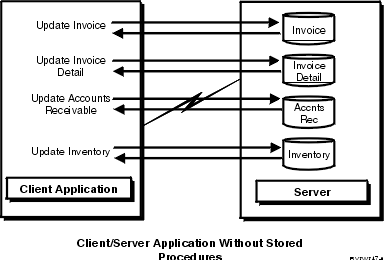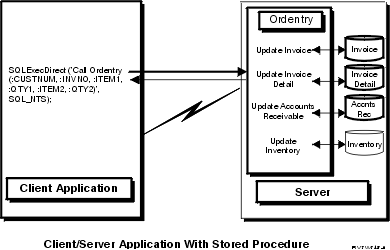Stored procedures commonly are used in client/server applications, especially in the area of online transaction processing (OLTP), since they can provide performance, transaction-integrity and security benefits.
For information regarding specific SQL commands that are used in the examples of stored procedures, see the SQL Reference book. View an HTML online version of the book, or print a PDF version, from the DB2 Universal Database™ for iSeries™ SQL Reference iSeries Information Center topic.
The illustration below shows an application where one transaction consists of four separate I/O operations, each that requires an SQL statement to be processed. In the client/server environment, this requires a minimum of eight messages between the server and the client, as shown. This can represent significant overhead, especially where the communication speed is slow (for example over a dial-up line), or where the turnaround speed for the connection is slow (for example over a satellite link).

The following illustration shows the same transaction by a stored procedure on the server. As illustrated, the communications traffic has been reduced to a single message pair. There are additional benefits. For example, the procedure can arrange to send back only the data that is absolutely required (for example, just a few characters from a long column). A DB2® for i5/OS™ stored procedure can be any iSeries program, and does not have to use SQL for data access.
